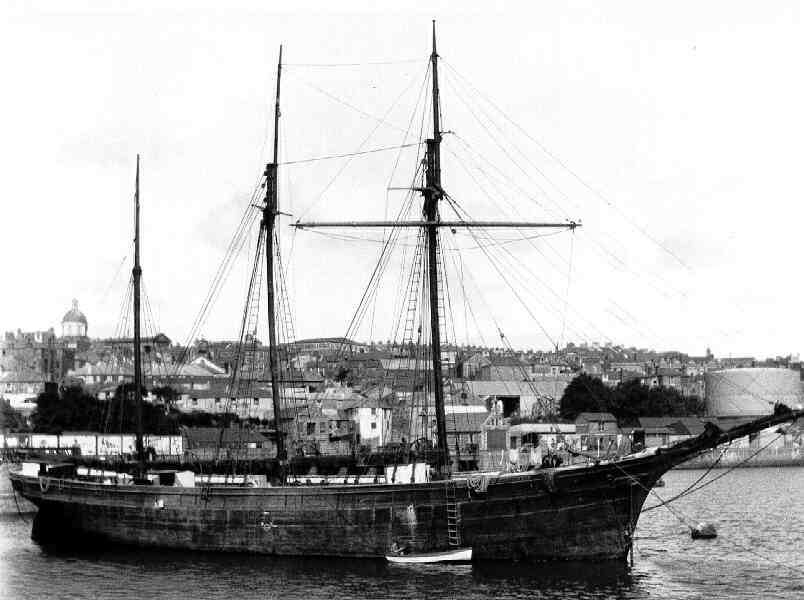 |
|
Official Number
70483 |
 |
|
Official Number
70483 |
The William Ashburner was a three-masted schooner, the largest wooden sailing vessel built at Barrow-in-Furness, and the only schooner built by the Ashburner shipyard that traded across the Atlantic or south of the Equator. In her first nineteen years, mainly under the command of Capt. Robert Charnley and Capt. Evans, she voyaged frequently to Uruguay for beef and bonemeal, to the West Indies for sugar, to New York and in the Mediterranean. She later went into the coasting trade and had a long working life that lasted until 1950.
Construction of the William Ashburner was started in March 1875 and took only 19 months. She was launched on the 19th October 1876 and her command was given to Capt. Robert Charnley. Her first voyage was to Cardiff and by the end of the year she had visited her first foreign port, Palma on the island of Majorca. In the following year her hull was yellow-metalled at the Ashburner shipyard, and she was relaunched on the same day as the Mary Ashburner.
| Capt. Robert Charnley had started his career with the Ashburners in command of first Lord Muncaster and then R & MJ Charnley, both of which he took to Spain and Portugal in the ore trade. After the William Ashburner had been yellow-metalled he took her to Morocco and the Mediterranean, then returned to Liverpool. In these years under Capt. Charnley the William Ashburner was considered to be a fast ship, it being claimed that she once covered 240 miles in 24 hours with a full coal cargo. In 1878 she took 40 days to make her first passage to South America, going from Liverpool to Parahiba, Brazil. She continued in transatlantic trade until 1894, when her final deepwater passage was from Antwerp to Parahiba, returning to London by way of Trinidad and Barbados. Thereafter she existed in the general coasting trade, being retained under the management of Thomas Ashburner & Co. |  |
Tim Ryan has sent the following note explaining the final fate of the vessel....." after running aground, the tide lifted her from the rock. She then drifted up and down the Severn for two days.The Old Passage ferry boat eventually secured her and beached her at the old slipway at Beachley. Once again the next big tide lifted her off and again she drifted up and down stream with the tides. Captured once more she was taken to the Buffer Wharf in Chepstow and moored beneath the Brunel "tubular bridge ". Purchased by a Chepstow police officer for her scrap value, her timbers being held together by large copper plugs, I was asked to use an oxy acetalene to remove the plugs. My view was that this would only serve to melt them and so I advised taking her to Hunger Pill on the Severn Estuary on a very high tide, beaching her, soaking her in parrafin and setting her alight.Coated in tar and pitch, she burned very well indeed. Afterwards the copper plugs were collected and sold for scrap." At the site 100 yards west of the Pill today can still be seen some of the hull plates and the remains of boilers and motors. "
|
|
|
|
|
|
|
|
|
|
|
|
|
|
|
|
|
|
|
|
|
|
Additional Information:
|
|
|
|